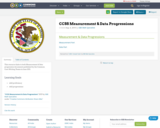
This resource links to both Measurement & Data progression documents published by the Common Core Writing Teams in June 2011.
- Material Type:
- Assessment
- Homework/Assignment
- Teaching/Learning Strategy
- Date Added:
- 05/09/2013

This resource links to both Measurement & Data progression documents published by the Common Core Writing Teams in June 2011.
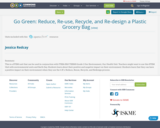
This is a STEM unit that can be used in conjunction with ITEEA EbD TEEMS Grade 2 Our Environment, Our Health Unit. Teachers might want to use this STEM Unit with environmental units and Earth Day. Students learn about their positive and negative impact on their environment. Students learn that they can have a positive impact on their environment when they use the 4 R’s: Reduce, Reuse, Recycle, and Redesign process.
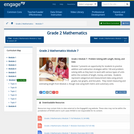
Module 7 presents an opportunity for students to practice addition and subtraction strategies within 100 and problem-solving skills as they learn to work with various types of units within the contexts of length, money, and data. Students represent categorical and measurement data using picture graphs, bar graphs, and line plots. They revisit measuring and estimating length from Module 2, though now using both metric and customary units.
Find the rest of the EngageNY Mathematics resources at https://archive.org/details/engageny-mathematics.
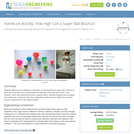
Students determine the coefficient of restitution (or the elasticity) for super balls. Working in pairs, they drop balls from a meter height and determine how high they bounce. They measure, record and repeat the process to gather data to calculate average bounce heights and coefficients of elasticity. Then they extrapolate to determine the height the ball would bounce if dropped from much higher heights.

In this lesson, students will choose a feature in the outdoor classroom to measure using a selected tool (tape, ruler, or yard/meter stick). They will sketch feature and label its dimensions.
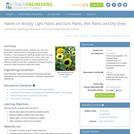
Students plant sunflower seeds in plastic cups, and once germinated, expose them to varying light or soil moisture conditions. They measure growth of the seedlings every few days using non-standard measurement (inch cubes). After a few weeks, they compare the growth of plants exposed to the different conditions and make bar comparative graphs, which they analyze to draw conclusions about the needs of plants.
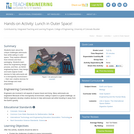
Students learn about the unique challenges astronauts face while eating in outer space. They explore different food choices and food packaging. Students learn about the engineering design process, and then, as NASA engineering teams, they design and build original model devices to help astronauts eat in a microgravity environment --- their own creative devices for food storage and meal preparation.

Students will be able to select and use appropriate tools (rulers, yardsticks, meter sticks, measuring tape) to measure the length of objects.
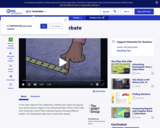
In this Cyberchase video segment, the CyberSquad helps resolve a dispute about the squares on the Gollywood Walk of Fame.
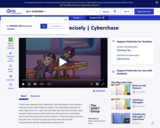
In this Cyberchase video segment, the CyberSquad must measure the length of the rope that will lower Digit from the ceiling to remove the voice box from a statue of Hacker.

(Nota: Esta es una traducción de un recurso educativo abierto creado por el Departamento de Educación del Estado de Nueva York (NYSED) como parte del proyecto "EngageNY" en 2013. Aunque el recurso real fue traducido por personas, la siguiente descripción se tradujo del inglés original usando Google Translate para ayudar a los usuarios potenciales a decidir si se adapta a sus necesidades y puede contener errores gramaticales o lingüísticos. La descripción original en inglés también se proporciona a continuación.)
El módulo 7 presenta una oportunidad para que los estudiantes practiquen estrategias de adición y sustracción dentro de 100 y habilidades de resolución de problemas a medida que aprenden a trabajar con varios tipos de unidades dentro de los contextos de longitud, dinero y datos. Los estudiantes representan datos categóricos y de medición utilizando gráficos de imágenes, gráficos de barras y parcelas de línea. Revisan la medición y la longitud de estimación del módulo 2, aunque ahora utilizan unidades métricas y habituales.
Encuentre el resto de los recursos matemáticos de Engageny en https://archive.org/details/engageny-mathematics.
English Description:
Module 7 presents an opportunity for students to practice addition and subtraction strategies within 100 and problem-solving skills as they learn to work with various types of units within the contexts of length, money, and data. Students represent categorical and measurement data using picture graphs, bar graphs, and line plots. They revisit measuring and estimating length from Module 2, though now using both metric and customary units.
Find the rest of the EngageNY Mathematics resources at https://archive.org/details/engageny-mathematics.
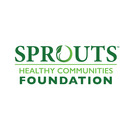
In this engaging unit, students will design and plant a square-foot garden that will be their central tool. Through the growing season, they will explore nutrition content in their everyday lives and see how it relates to what they are growing.

Embark on an educational adventure through the fascinating world of mathematics with our math-themed nature scavenger hunt lesson plan. Students will explore the outdoors, engaging in activities that integrate mathematical concepts such as shapes, patterns, and measurements found in nature. This interactive experience not only enhances their understanding of math but also cultivates a deeper appreciation for the natural environment. Through hands-on exploration and problem-solving, students will discover the beauty of mathematics all around them, making learning both enriching and enjoyable.
![OREGON MATH STANDARDS (2021): [2.GM]](https://img.oercommons.org/160x134/oercommons/media/courseware/lesson/image/13138_ODE_Math_Logo_2018-H_color_BvjqVNy.png)
The intent of clarifying statements is to provide additional guidance for educators to communicate the intent of the standard to support the future development of curricular resources and assessments aligned to the 2021 math standards. Clarifying statements can be in the form of succinct sentences or paragraphs that attend to one of four types of clarifications: (1) Student Experiences; (2) Examples; (3) Boundaries; and (4) Connection to Math Practices.
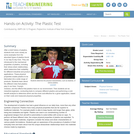
After a brief history of plastics, students look more closely as some examples from the abundant types of plastics found in our day-to-day lives. They are introduced to the mechanical properties of plastics, including their stress-strain relationships, which determine their suitability for different industrial and product applications. These physical properties enable plastics to be fabricated into a wide range of products. Students learn about the different roles that plastics play in our lives, Young's modulus, and the effects that plastics have on our environment. Then students act as industrial engineers, conducting tests to compare different plastics and performing a cost-benefit analysis to determine which are the most cost-effective for a given application, based on their costs and measured physical properties.
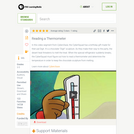
In this video segment from Cyberchase, the CyberSquad learns how to read a thermometer as they try to keep their chocolate sculpture from melting.

The purpose of Preservation Problem Solvers is to encourage students to use leadership and resourceful behaviors to think like a scientist. This module extends the Essential Strategies of Attributes, Questioning, and Creative Problem Solving introduced in Kindergarten and First Grade, is for all students. The classroom teacher should work with a specialist or special educator to find or develop alternate activities or resources for visually impaired students, where appropriate.